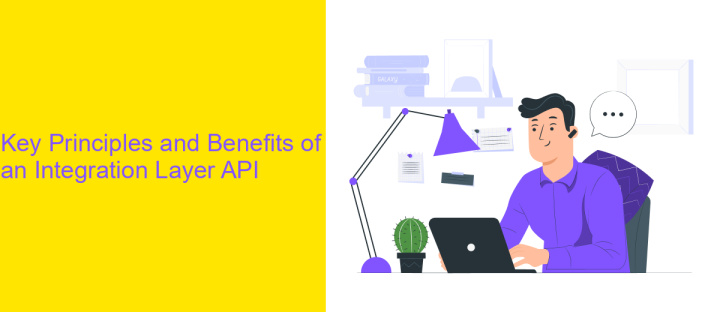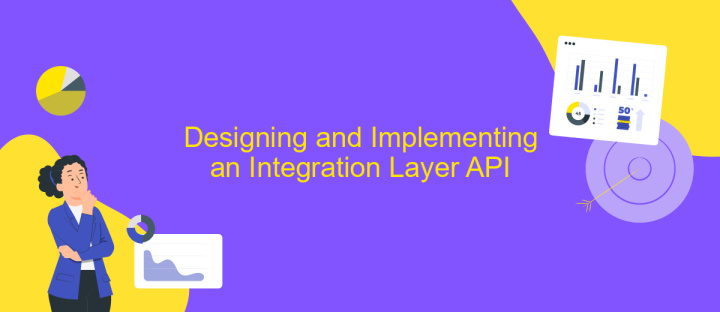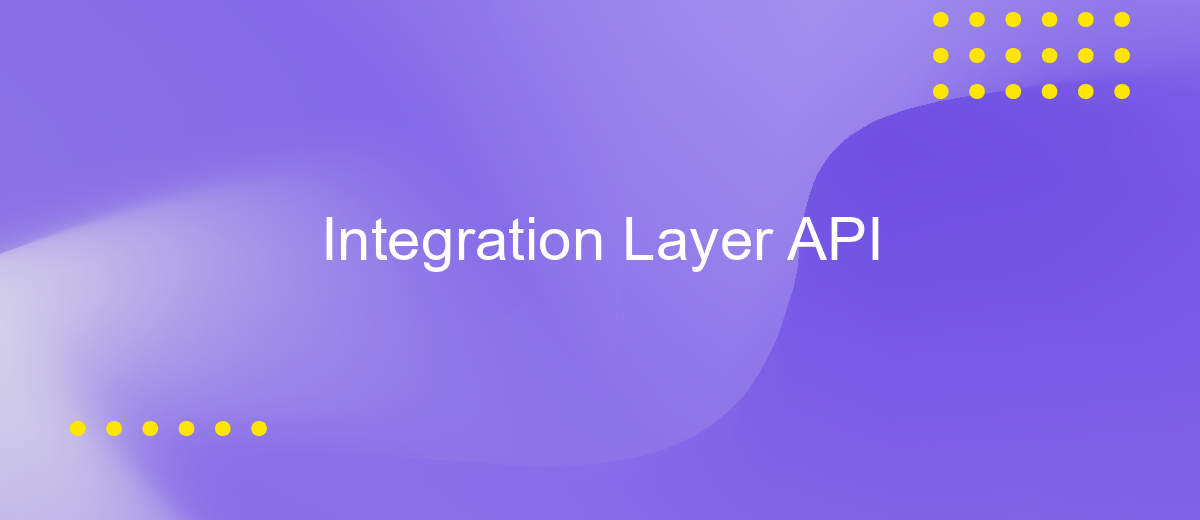Integration Layer API
The Integration Layer API serves as a crucial intermediary that facilitates seamless communication between disparate software systems. By providing a standardized interface, it enables diverse applications to interact efficiently, ensuring data consistency and streamlining processes. This API not only enhances interoperability but also accelerates digital transformation efforts, allowing businesses to adapt swiftly in a rapidly evolving technological landscape. Discover how the Integration Layer API can optimize your system architecture and drive innovation.
Understanding the Need for an Integration Layer API
In today's digital landscape, businesses rely on a multitude of applications and systems to perform various functions. As organizations grow, so does the complexity of their IT infrastructure. This complexity often leads to challenges in communication and data exchange between disparate systems. An Integration Layer API serves as a bridge that facilitates seamless interaction and data flow between different applications, ensuring that systems work harmoniously together.
- Enables interoperability by allowing different systems to communicate effectively.
- Reduces redundancy by centralizing data exchange processes.
- Enhances scalability by providing a flexible framework for adding new applications.
- Improves data consistency and accuracy across platforms.
- Streamlines processes by automating data integration tasks.
By implementing an Integration Layer API, businesses can overcome the hurdles of fragmented systems and data silos. This approach not only optimizes operational efficiency but also supports strategic initiatives such as digital transformation. Ultimately, an Integration Layer API is crucial for organizations aiming to maintain a competitive edge in an increasingly interconnected digital environment.
Key Principles and Benefits of an Integration Layer API

Integration Layer APIs serve as a crucial component in modern software architecture, offering seamless connectivity between disparate systems. One key principle is abstraction, which simplifies complex system interactions by providing a unified interface. This abstraction layer ensures that changes in one system do not disrupt others, fostering agility and reducing maintenance overhead. Additionally, Integration Layer APIs enhance scalability by allowing systems to expand independently while maintaining interoperability. They also support real-time data synchronization, ensuring that information is consistently updated across platforms.
Among the benefits, organizations can achieve improved efficiency and reduced time-to-market for new features and services. Tools like ApiX-Drive exemplify these advantages by offering user-friendly solutions for setting up integrations without extensive coding knowledge. ApiX-Drive enables businesses to automate workflows, streamline operations, and integrate various applications effortlessly. This results in cost savings and a more agile response to market demands. Ultimately, Integration Layer APIs empower organizations to build robust, flexible, and future-proof digital ecosystems, driving innovation and competitive advantage.
Designing and Implementing an Integration Layer API

When designing an Integration Layer API, the primary focus should be on ensuring seamless communication between disparate systems. This involves understanding the specific requirements of each system to create a robust and flexible API that can handle various data formats and protocols. Consideration of security, scalability, and performance is crucial to accommodate future growth and protect sensitive data.
- Identify the key systems and data flows that the API will integrate.
- Define clear API specifications, including endpoints, methods, and data formats.
- Implement security measures such as authentication and authorization protocols.
- Develop the API using scalable architecture to handle increased loads.
- Test the API thoroughly to ensure functionality and reliability across systems.
Implementing an Integration Layer API requires careful planning and execution. By following a structured approach, you can build an API that not only meets current integration needs but is also adaptable to future changes. Collaboration with stakeholders throughout the process ensures that the API aligns with business objectives and technical requirements, resulting in a successful integration strategy.
Best Practices and Common Pitfalls

When implementing an Integration Layer API, it's crucial to maintain a clear and consistent naming convention. This enhances readability and makes it easier for developers to understand the API's purpose. Documentation should be comprehensive yet concise, ensuring that all potential users can quickly grasp how to interact with the API effectively.
Security is another critical aspect. Implementing authentication and authorization mechanisms prevents unauthorized access and protects sensitive data. Regularly update these security measures to address evolving threats and vulnerabilities.
- Ensure robust error handling and logging to facilitate troubleshooting and system maintenance.
- Design with scalability in mind to accommodate future growth and increased load.
- Implement versioning to manage changes and maintain backward compatibility.
- Optimize performance by minimizing latency and ensuring efficient data processing.
One common pitfall is overlooking the importance of testing. Comprehensive testing, including unit, integration, and performance tests, is essential to identify and resolve issues early in the development process. Neglecting this can lead to significant problems post-deployment, impacting user experience and system reliability.


Future Trends and Considerations for Integration Layer APIs
The future of Integration Layer APIs is poised to embrace advancements in artificial intelligence and machine learning, enhancing their ability to automate and optimize data flows across diverse systems. As businesses increasingly adopt cloud-based solutions, APIs will need to focus on scalability and security to handle growing data volumes and protect sensitive information. Additionally, the rise of IoT devices will demand APIs that can seamlessly integrate with a plethora of smart devices, ensuring real-time data exchange and interoperability.
Considerations for future integration layers include the need for user-friendly platforms that simplify the integration process. Services like ApiX-Drive are at the forefront, offering intuitive interfaces that allow businesses to set up integrations without extensive technical expertise. Such platforms will become essential as organizations seek to streamline operations and reduce dependency on specialized IT resources. Furthermore, as regulatory landscapes evolve, APIs will need to ensure compliance with data protection standards, making security and privacy critical components of their development and deployment strategies.
FAQ
What is an Integration Layer API?
How does an Integration Layer API work?
What are the benefits of using an Integration Layer API?
How can businesses implement an Integration Layer API?
What challenges might arise when using an Integration Layer API?
Strive to take your business to the next level, achieve your goals faster and more efficiently? Apix-Drive is your reliable assistant for these tasks. An online service and application connector will help you automate key business processes and get rid of the routine. You and your employees will free up time for important core tasks. Try Apix-Drive features for free to see the effectiveness of the online connector for yourself.

